
Sustainable fashion is a movement and process of fostering change to fashion products and the fashion system towards greater ecological integrity and social justice.
Photography: Vince Oyolo

Sustainable fashion is thus partly about producing clothes, shoes, and accessories in environmentally and socio-economically sustainable manners, but also about more sustainable patterns of consumption and use, which necessitate shifts in individual attitudes and behavior.

As a nation, at least 30% of it has thrifted an item once in there life not knowing that they are saving the planet one piece at a time. In this day and age with depleted resources and the impact human life has had thus far on the environment, sustainability isn’t just a fad or trending hashtag.
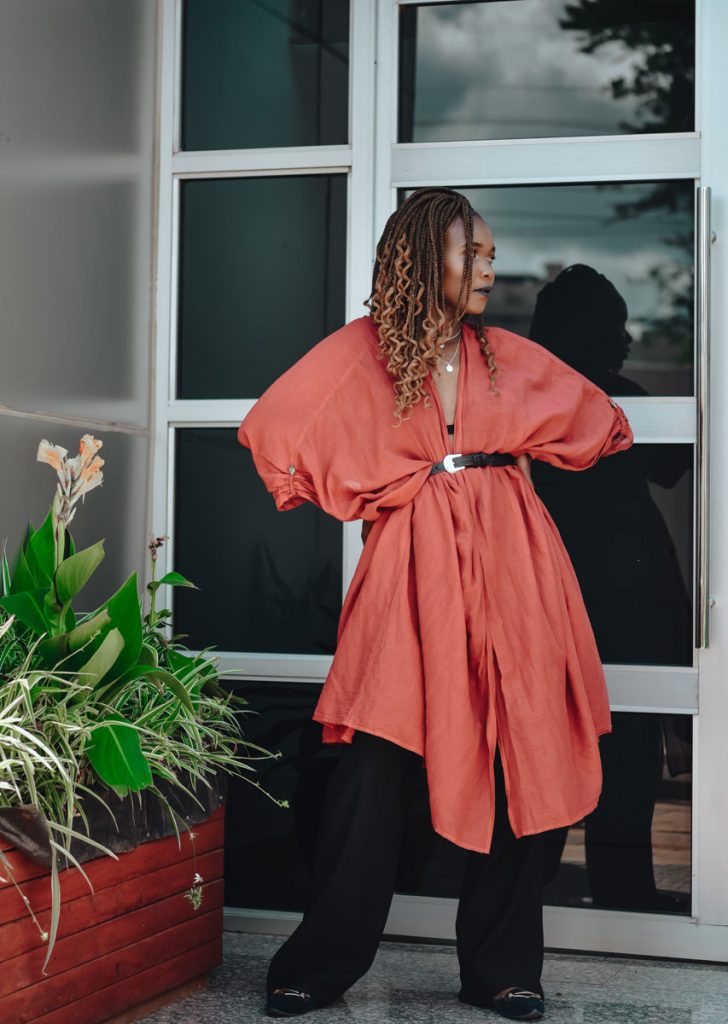
The main responsibility of fashion companies is obviously to change their production, distribution, and marketing practices and strategies towards greater sustainability.
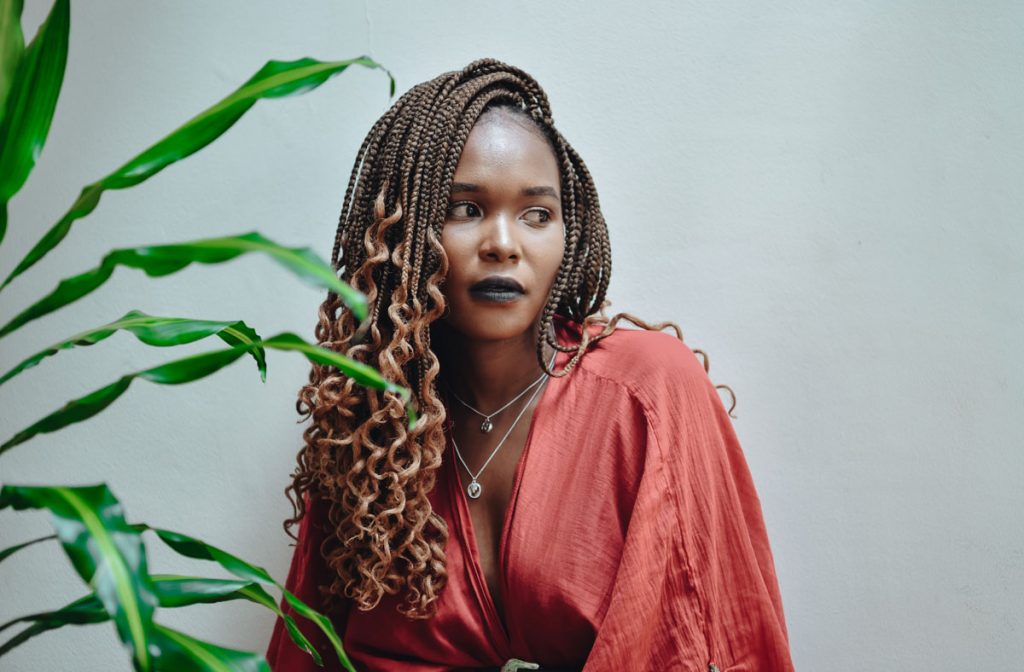
It also means considering fashion from the perspective of many stakeholders – users and producers, all living species, contemporary and future dwellers on earth. Sustainable fashion, therefore, belongs to and is the responsibility of citizens, the public sector, and the private sector.
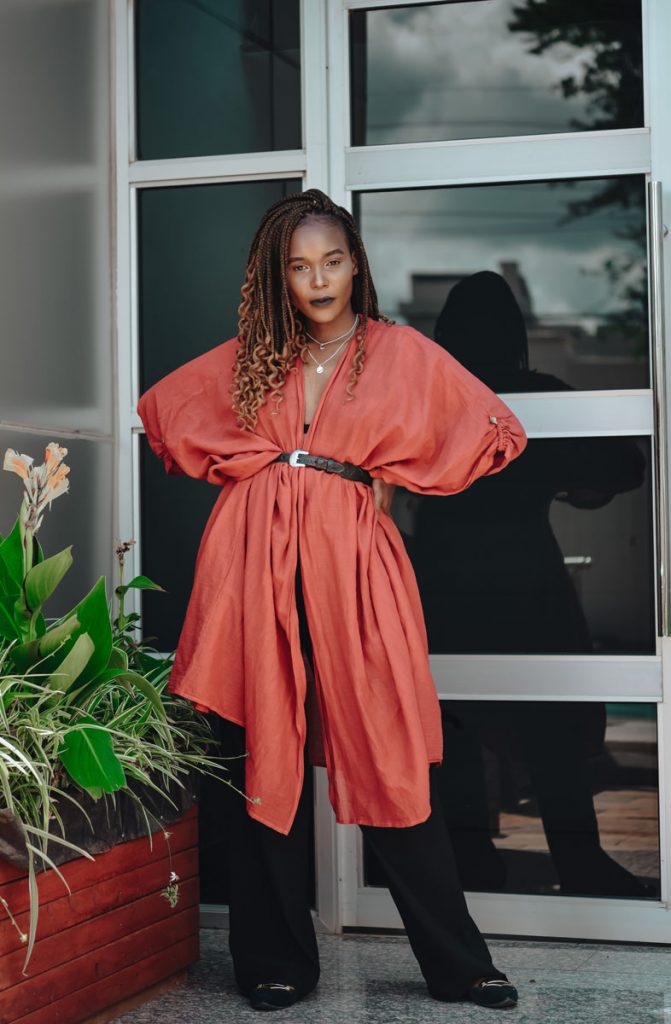
To help you incorporate more sustainable options in your shopping, other than thrifting, I’m sharing about a sustainable fashion brand I have stumbled upon in Kenya.

Introducing my Lilabare, more specifically, my Kimono.
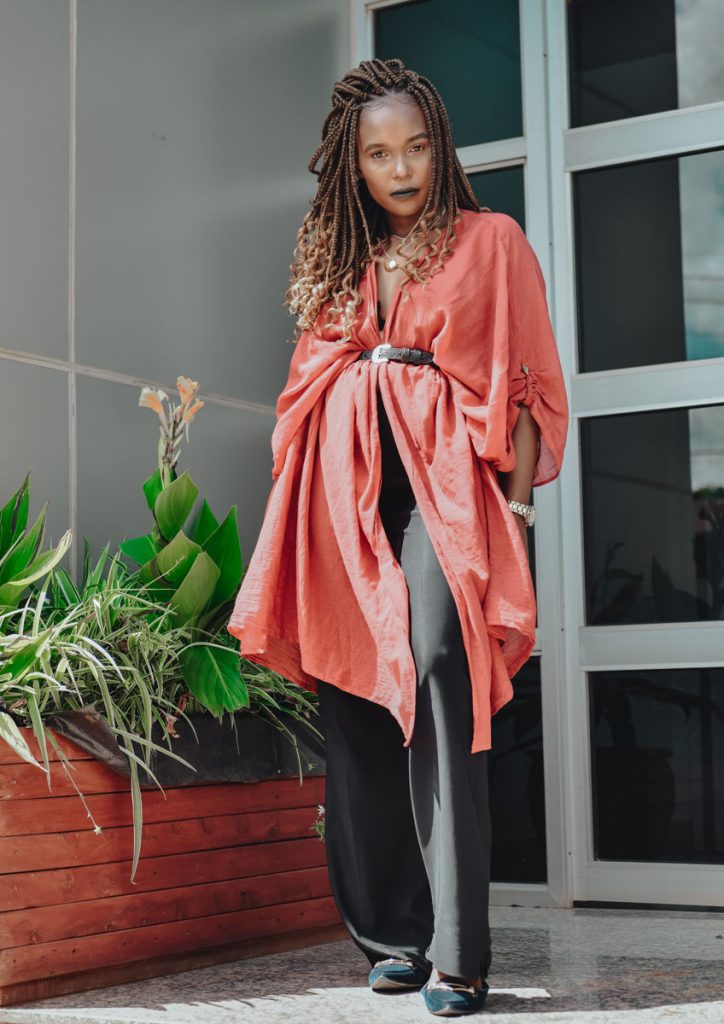
Each Lilabare piece stems from there mission of zero-waste & preserving handcraft. Sourcing post-production industry excess that is borne of ancient spinning & dyeing techniques, they bring each piece to life in Kenya alongside small scale artisans in there atelier in Nairobi.
You should definitely check them out.

To be considered sustainable, brands must work to improve every single aspect of a product’s life cycle. They must use sustainable raw materials, store and transport clothing responsibly, and do their best to ensure that items can be repaired and recycled.
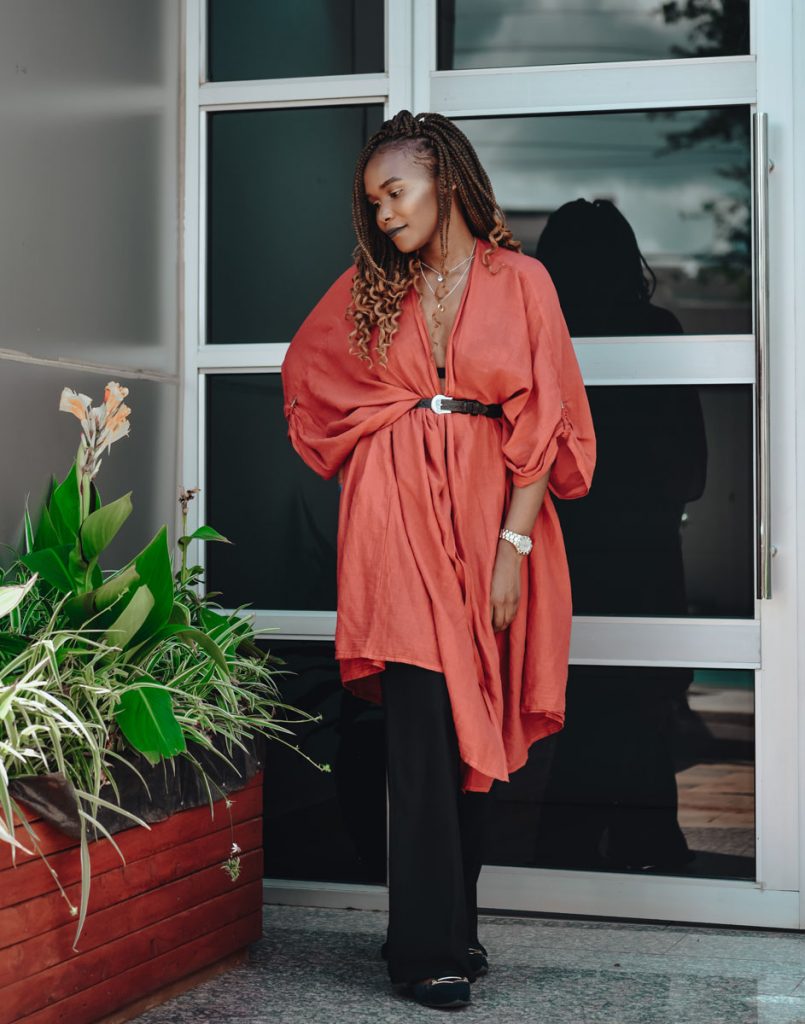
Fast Fashion has been the longest trend and because of it, many of today’s inexpensive fashion items are being discarded only after being worn just a handful of times. In fact, thanks to such practices, fashion has been introduced as one of the most polluter sectors.

Did you know that producing just one kilogram of cotton takes 20 thousand liters of water, for example?
Outfit Details
Neckpiece: Kadenyi Pop Up
Kimono: Lilabare
Watch: Guess
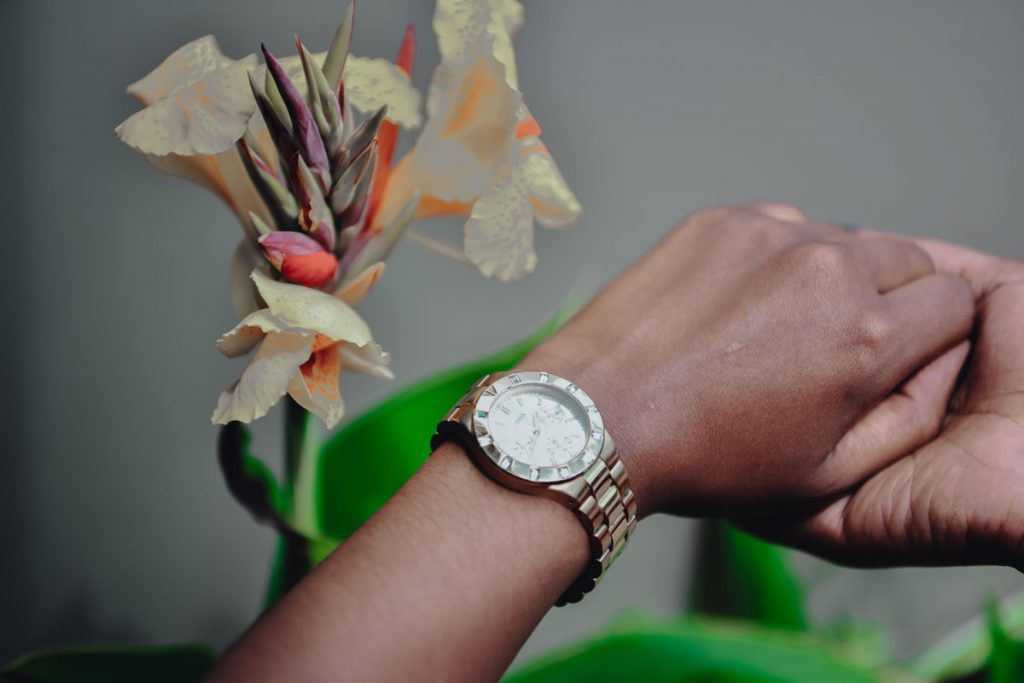
Belt and Pants: Thrifted
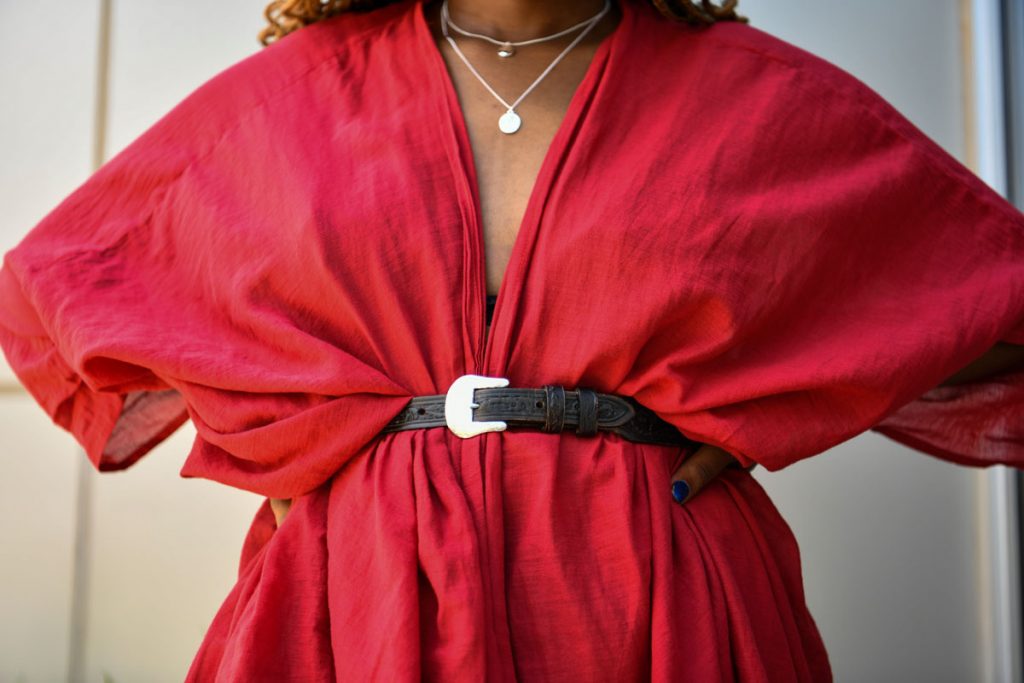
Shoes: Dumond
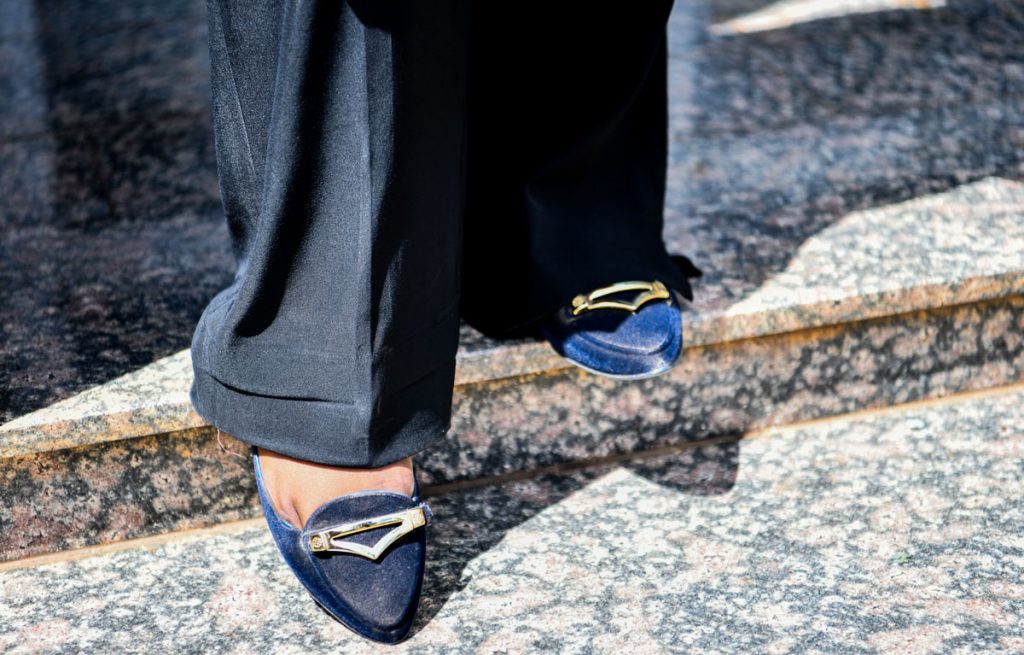
One specific issue that affects us all is the water usage in the manufacturing process. This depletes the amount of safe drinking water in the world which is already impacted by other industries and human waste.
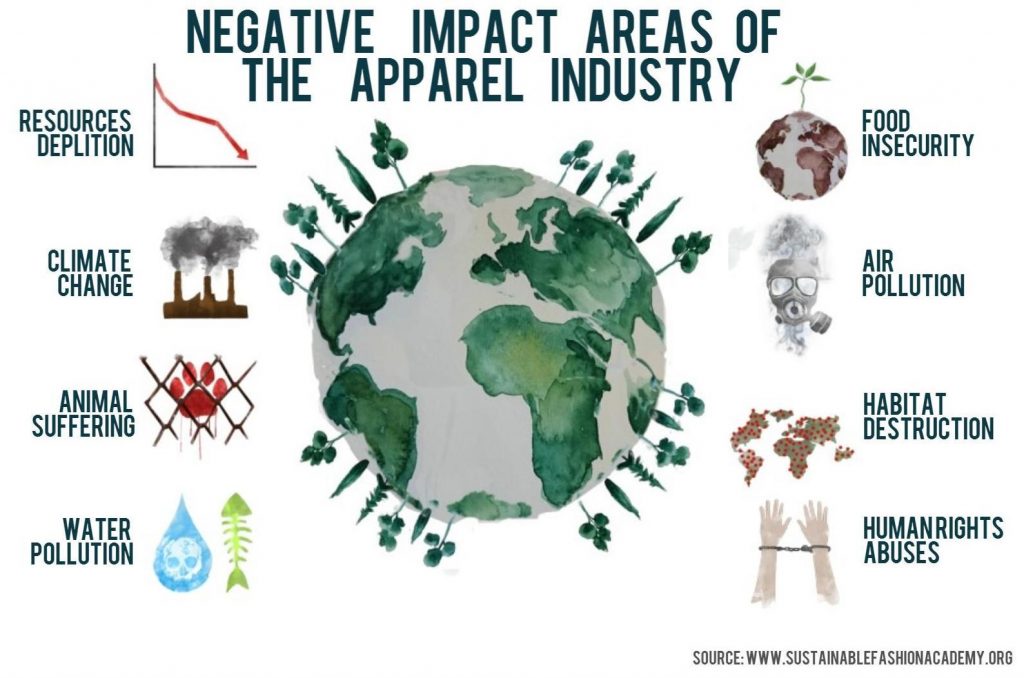
In an ecological context, sustainability would be achieved when all that is taken from the environment can be renewed.
Small steps make a big difference
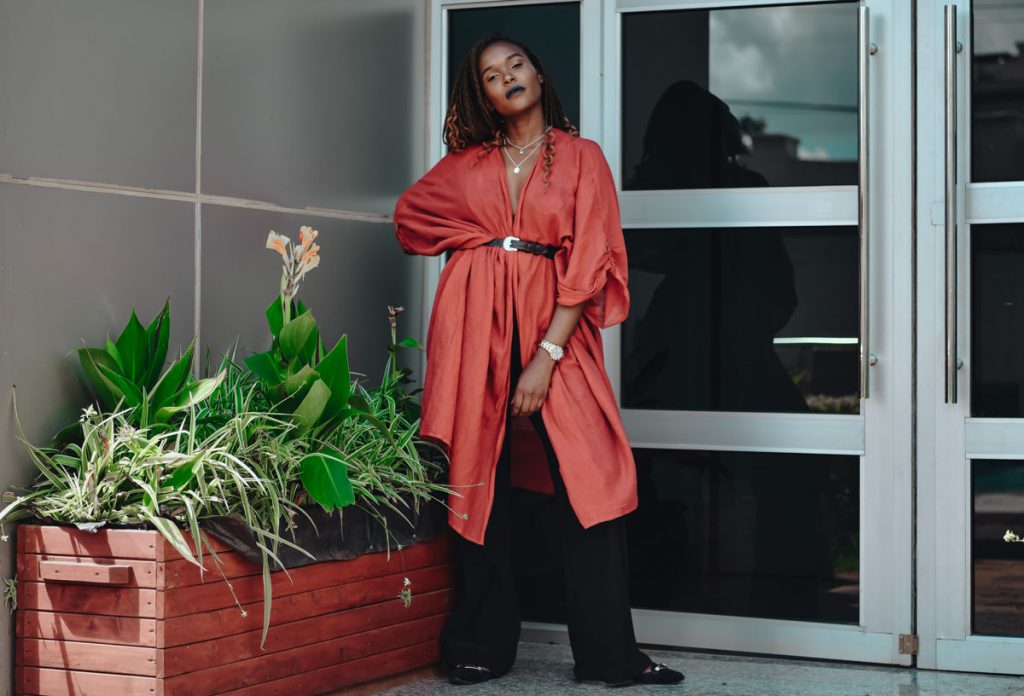
Where’d you get those shoes?! I absolutely adore them!
Oh, you know. . . they’re vintage.
There’s a special rush that comes with knowing your fresh new thrift goods that are one of a kind, and even more so when they’re retrieved from the long-gone time of decades past.

Buying secondhand is not only a great way to discover some buried treasure and make it uniquely your own but also a meaningful stand against the damaging fast fashion industry.
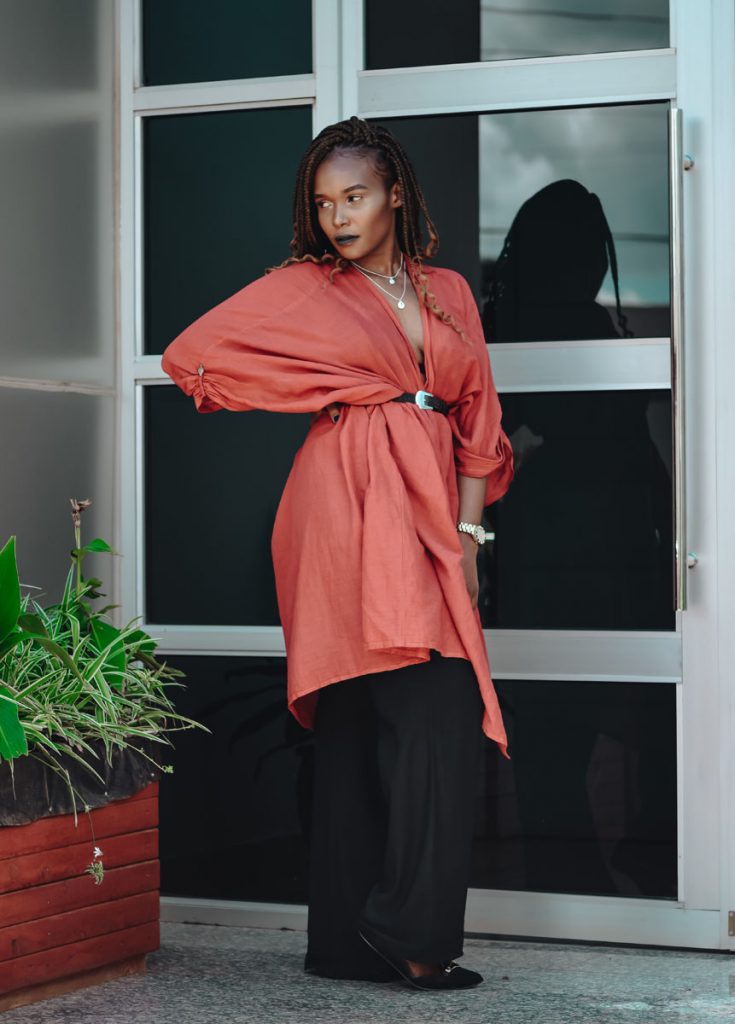
As professional women, we need to take responsibility for our daily choices. Commit to buying less, limit your outfits per day, and invest in pieces that last longer.

Next time you’re shopping, do your research. Pay close attention to how brands use the term “transparency.” Do they really mean it and prove it? Does the brand take initiatives with the fabrics used? Are they committed to ethical/sustainable practices?

It’s easy to forget the impact of purchase or the power you have as a consumer. There are small steps we can take each day to pave the path toward a more sustainable fashion future.

Fashion has always been a way to indicate who you are to the world – so now is the time to think about what you want your clothes to say about the kind of world and future that we should aim for.
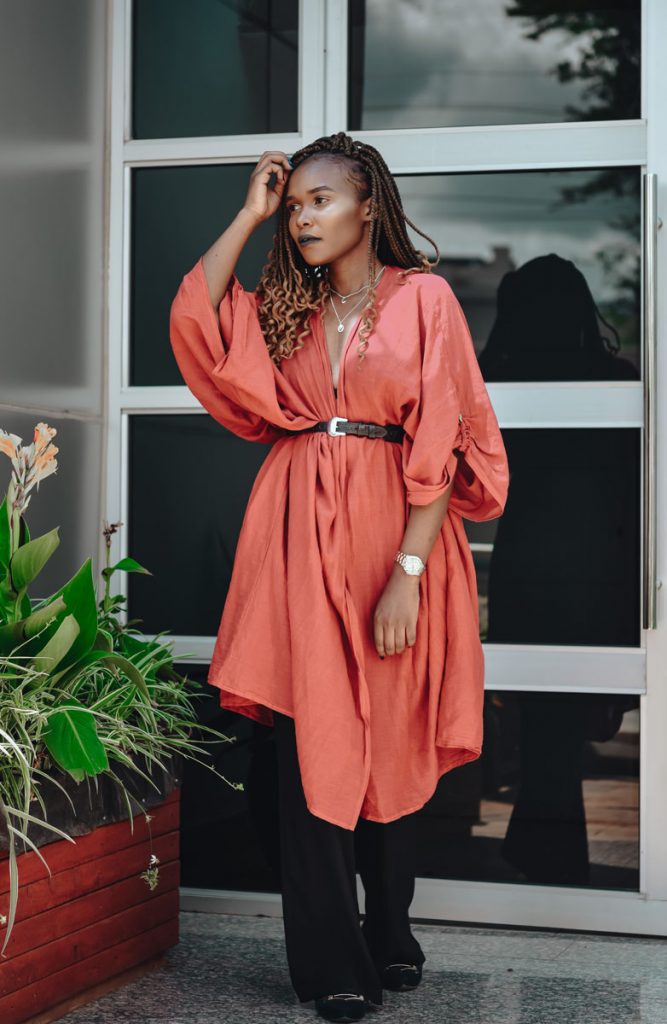
Stay stylish,
Kadenyi.

